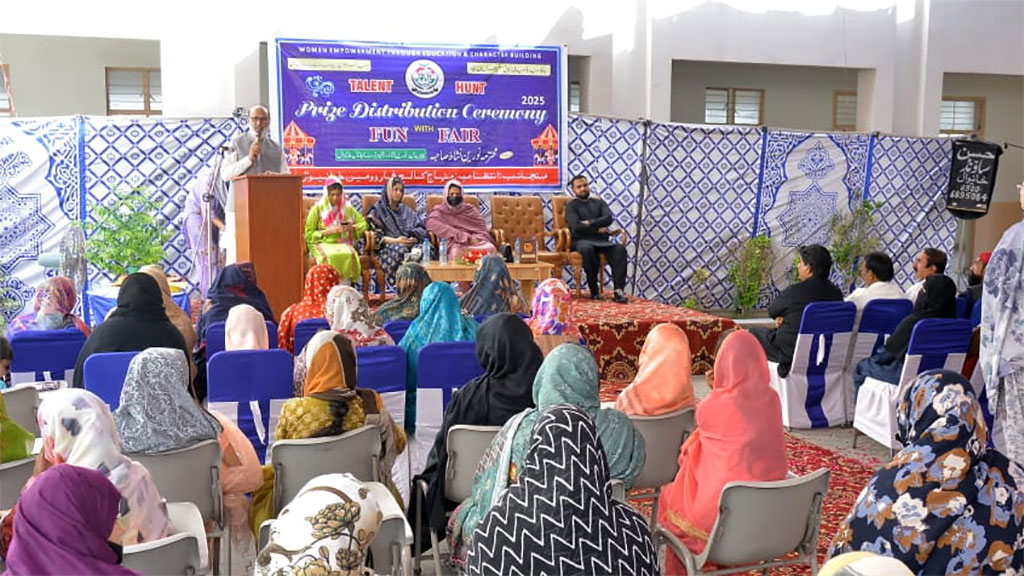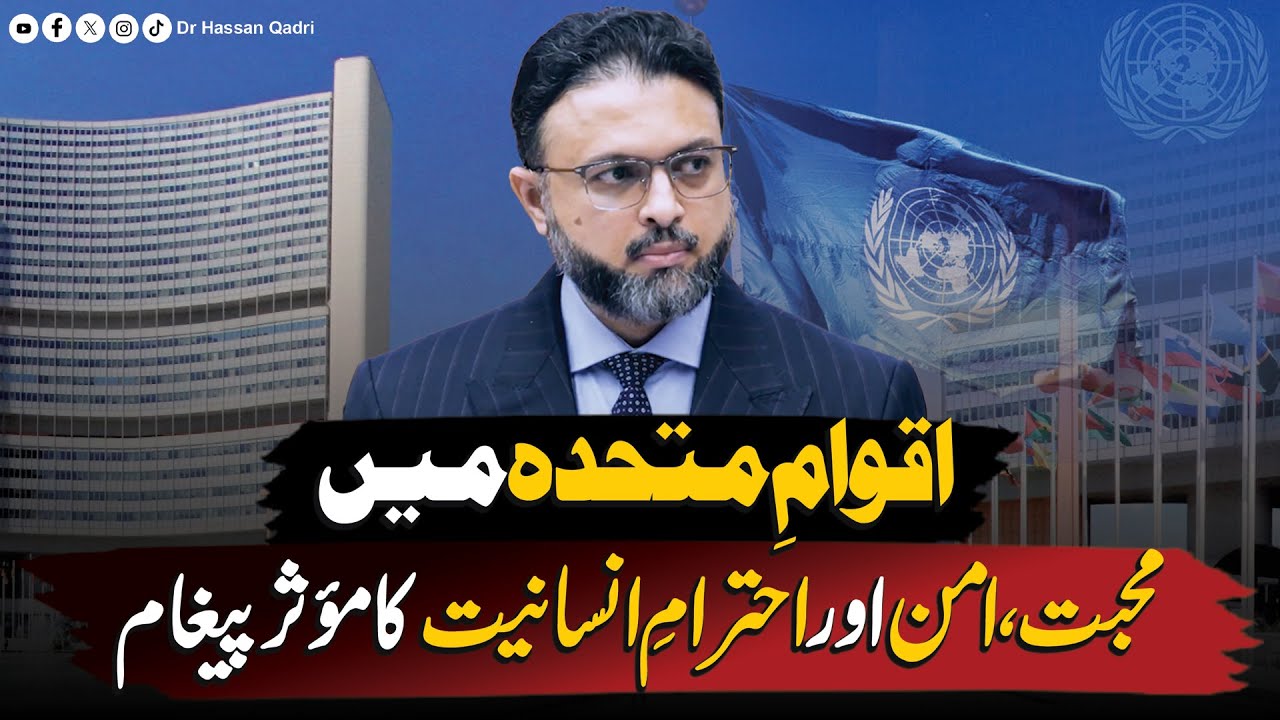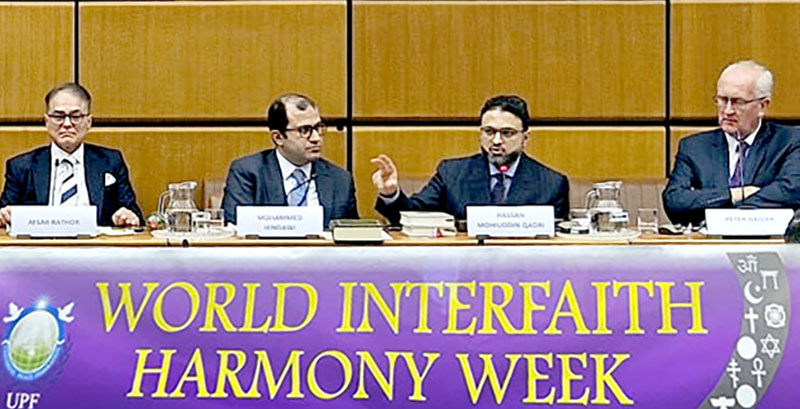Drugs addiction and the youth
This Article was published in
The Frontier Post (Jun 20, 2010)
Daily The Post (Jun 20, 2010)
By Sahibzada Hussain Mohi-ud-Din Qadri
Drugs addiction is harmful not only for the addicted but also has negative impact on the fabric of the society. The effects of such an addiction can cause dangerous changes in the mind, body and spirit of the drug addict. The most disturbing aspect of drug addiction is that it is reaching epidemic proportions in the whole world. People in our part of the world are increasingly becoming addicted to all kinds of drugs including street drugs and prescription drugs etc.
Street drugs include cocaine, heroin and crack, marijuana and meth, while prescription drugs include those such as Valium, OxyContin, Percocet and Ritalin etc. The price of drugs can be very heavy. Simple ill-effects of such addiction include physical itchiness, coma and even premature death. On the other hand, the psychological ill effects can make a person completely dependent on taking drugs in order to survive.
Drugs addiction is a very serious problem and even if the addict is using prescribed drugs, the ill effects can be very harmful indeed. It is, therefore, important that the government takes administrative, legal and policy measures that put an end to the menace of drug addiction. The right kind of information can help the addict avoid overdosing and it can also prevent medical-related complications.
The ill effects of addiction to drugs can be very difficult to endure, which is why the addict must be treated for their condition at the earliest. A lot of research is being done on how addiction to drugs harms people and societies. An individual that takes drugs will expect certain changes to take place in his being.
In the US, addiction to drugs is quite widespread. One study on this problem revealed that one in every five American aged between sixteen and fifty nine had used at least one drug. What’s more is that about half (46 percent) of Americans, aged between 16 and 21, admitted having used drugs in different phases of their life. Even more worrying is the fact that approximately twenty million people, aged above twelve years, have used illegal drugs in the US. In fact, about 1.47 percent of Americans are addicted to drugs.
North America, which includes US and Canada and even Mexico, has a major drugs addiction problem. The problem is no less dangerous in Central America where countries such as Belize, Guatemala and Nicaragua are major centres for drug abuse.
Drugs addiction in Pakistan is no less worrisome. Though its neighbours (India, Bangladesh and Maldives as well as Nepal) all have drugs addiction issues, Pakistan is the worst affected throughout South Asia. It is, after all, home to the largest market for heroin consumption. What’s more, Pakistan is also a major exporter of heroin and, in fact, approximately fifty tons of opium is illegally brought into Pakistan to produce heroin.
Pakistan, Afghanistan, Bangladesh, Bhutan, India and even Sri Lanka all have major issues with use of drugs. Afghanistan, for example, has about 28,513,677 drug addicts, while Bangladesh has 141, 340, 476 addicts. India has a staggering 1,065, 070,607 drug users, while Pakistan has 159, 196, 336 addicts.
The worst thing about being addicted to drugs is that it is affecting the youth in every part of the world in a major way. The trouble starts among the school-going children but the problem is exacerbated with abetment by those who wish to earn money out of selling drugs.
The problem among children and youth arises because of a perception that they seem to harbour the notion of their inadequacy for failing to measure up to their expectations of their elders. Nowadays it has become fashionable for the actors and singers to include tales of drugs addiction and sexual references in their music. So instead of inculcating good values in the youth, the entertainment industry is responsible for propagating the use of drugs, which is further fuelling the addiction to drugs in both the developed and developing world.
The youth has become the target of major drug peddlers. These peddlers sell drugs and package them as symbols of revolution and freshness but have no regard for the consequences of their actions. The youth that takes to drugs are more likely to commit suicide because of the harmful effects of the drugs they are taking. Misinformation about drugs is another reason for these deaths as the addict or user may take the drugs in wrong doses, which can then lead to a fatality.
Drugs addiction among the youth is killing them morally and socially as well as psychologically and even physically. And, drug barons are becoming increasingly wealthier by supplying these drugs that are causing untold misery.
It is time that societies and governments took a firmer view about preventing and stopping drugs addiction. There should be a community plan that should be implemented to stop addiction to drugs. This plan must identify the specific drugs that youth are using. It should build on existing resources such as existing drug abuse prevention programmes and it should also develop short-term goals relevant to proper implementation of research- based drug abuse prevention programmes.
In addition, the community plan must project its long- term objectives to ensure that resources are made available and in addition, the community plan must also incorporate ongoing assessments to evaluate the effectiveness of their preventive measures and strategies.
In fact, all preventive measures need to address different forms of drug abuse and addiction and should also target different types of drug abuse and addictions. It should also be tailored to address risks that are specific to certain populations or audience characteristics. It must be aimed at specific populations and at major transition points such as at middle-school level.
Unless serious measures are taken now, the very future of a large chunk of today’s youth will be severely compromised. The problem of drug addiction is too real and serious to be ignored. The governments need to involve communities and media in highlighting the perils associated with the drug addiction. Media has a responsibility to highlight such issues with a view to educating people and building a consensus among them to forge a united stand against such scourges.
The perpetrators of doom and gloom are well entrenched in the power structures and have formed transnational partnerships for their nefarious purposes. The response to deal with such an organized menace should also be concerted for effective output. It calls for sustained engagement and coordinated action among countries. Individual efforts cannot produce desired results. For how long shall we turn a blind eye to such critical issues? It is now time to be responsible in our actions.
The writer is Australia-based PhD scholar




















Comments